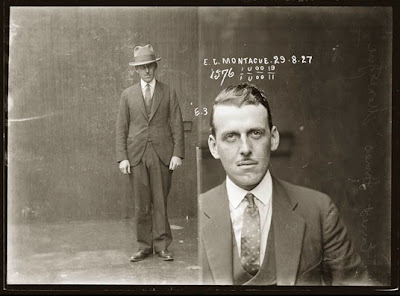
"He will take his camera and ride off in search of new evidence that his city, even in her most drunken and disorderly and pathetic moments, is beautiful."
- William McCleery in 'Naked City'
New York shutterbug Arthur Fellig, AKA "Weegee" (June 12, 1899 – Dec. 26, 1968) didn't invent tabloid photography, but he turned it into high art.
Fellig earned his nickname, a phonetic rendering of Ouija, because of his frequent, seemingly prescient arrivals at scenes only minutes after crimes, fires or other emergencies were reported to authorities.
Weegee the photographer was the cigar-chewing saturnine poet of New York's Lower East Side in the 1930s and '40s. He prowled the streets at night, police radio in his car, in search of crime, fires, car crashes and any scene that would throw human nature and its frailties into relief. He also frequently focused his lens on the denizens of the night, whether they be Bowery flop house regulars, burlesque performers or rich folk slumming it amid the blood and beer in the streets.
Armed with a Speed Graphic camera, whose mighty flash bulbs poured stark, unyielding light onto scenes of dead gunmen splayed across sidewalks, grieving families watching their apartment building burn -- with a relative inside that firefighters couldn't get to, or the aftermath of twisted steel and still-warm corpses left in the path of an auto wreck, Weegee created a bold, unflinching view of the terror and joy of the urban condition.

With a darkroom setup in the trunk of his car, the self-taught photographer developed his own pictures on the fly, typed a descriptive blurb about each scene (see photo, left) and delivered the fruits of his labors to the papers in time for the "bulldog" edition.
It was the success of his first photography book, "Naked City" (1945), that made Weegee famous. And as Lee Friedlander noted... "It is one of the great ironies of 'Naked City' that although it established Weegee as an expressive photographer and helped prepare the way for his work to enter and belong in art museums, it produced one of the purest forms of the tabloid as we know it today." Film director Stanley Kubrick admired Weegee’s photographs so much so that he hired him as the stills photographer of "Doctor Strangelove." When Peter Sellers heard Weegee speak he apparently used Weegee’s voice for Dr Strangelove.

Weegee's book inspired "
The Naked City," a 1948 crime film directed by Jules Dassin. The movie, shot partly in documentary style, was filmed on location on the streets of New York City. The director sought to capture the drama that Weegee delivered daily in those two-penny tabloids that gripped the city for decades. Dassin got the flavor of the times in his movie, but it's a fool's errand to try to equal the force of those simple black and white photos that served as an inspiration to Dassin, and likely, to other crime film directors, as well. Weegee was an exceedingly tough act to follow.




